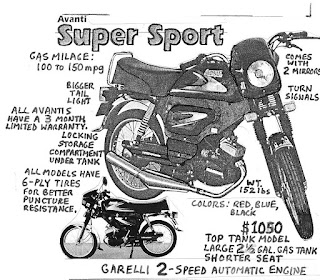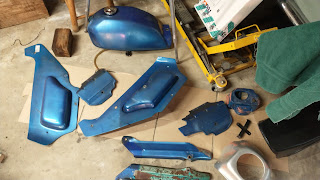I've been asked a few times on how I managed to make my Genuine Scooter Stella 2T fuel level sender reliable. So when the opportunity to fix the sender unit on my friend's scooter came up, we decided to take photos this time.
The principle of the sender is very basic, but some of the materials chosen when it was manufactured were not ideal. The sender works with a float on the end of a stiff wire arm. When the float moves around the fulcrum pin, a wiper contact slides across a variable resistor.
The first step is to pry open the tabs which retain the cover over the mechanism. It is wise not to over-bend these, because they are small and fragile.
Once the cover is removed, the mechanism is exposed.
The float goes up and down which moves a wiper contact along a nickel-chrome wire wound around an insulating material. This forms a variable resistor. The problem is that this insulating material is not very stiff and over time it bows away from the wiper in the middle. When the nickel chrome wire is no longer in contact with the wiper it causes the gauge to read EMPTY. Rather than risk snapping the small gauge nickel chrome wire and re-winding it on a different material, I have shaped pieces of non-copper-clad circuit board material into a fat "T shape" with the bottom of the "T shaped" piece 20mm wide. The upper sides of the T are just to keep it from falling downward will be trimmed off to fit the cover back on, so I just eye them up before cutting them. The final trim is done with a dremel cutoff tool. If all you have is single-side copper clad board, just put the copper AWAY from the resistor.
It takes two of these to wedge the resistor back to a flat shape. I use a file to remove some of the material of one of the T shaped pieces so they fit just right. These aren't particularly critical, you can see I just cut them out roughly by hand using the dremel tool and didn't even bother with a straight edge. The "T shapes" fit in from the top behind the resistor and should press down and straighten the resistor so its flat.
Once the resistor is wedged to stay flat, the wiper stays in contact throughout the range of motion. The cover can be replaced and the tabs gently bent back over to keep it in place. This type of repair has lasted umpteen thousand miles.










































